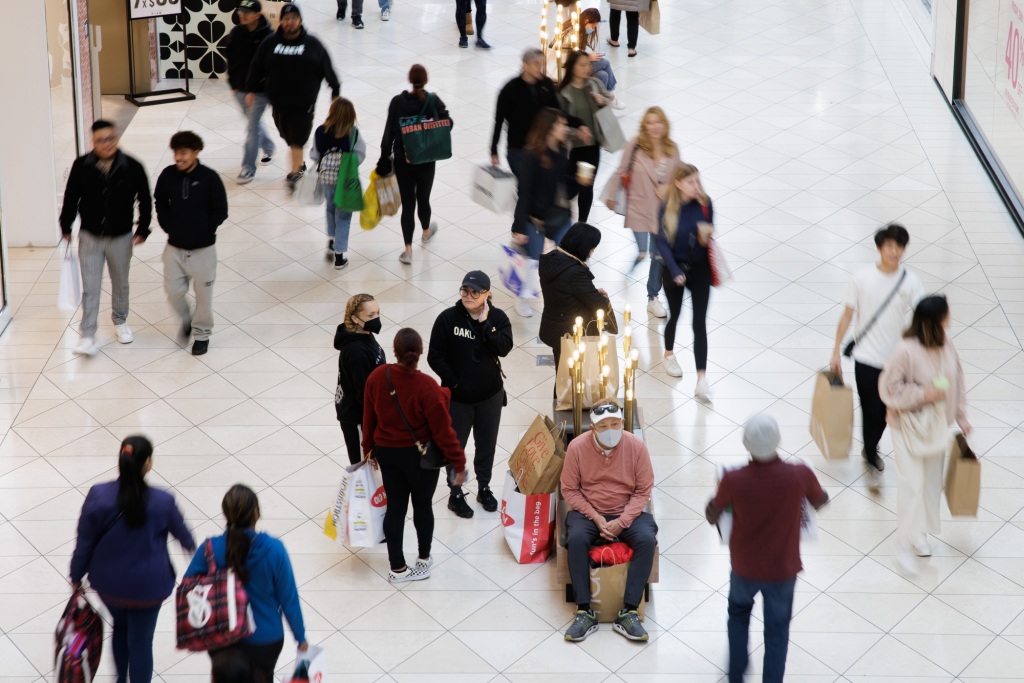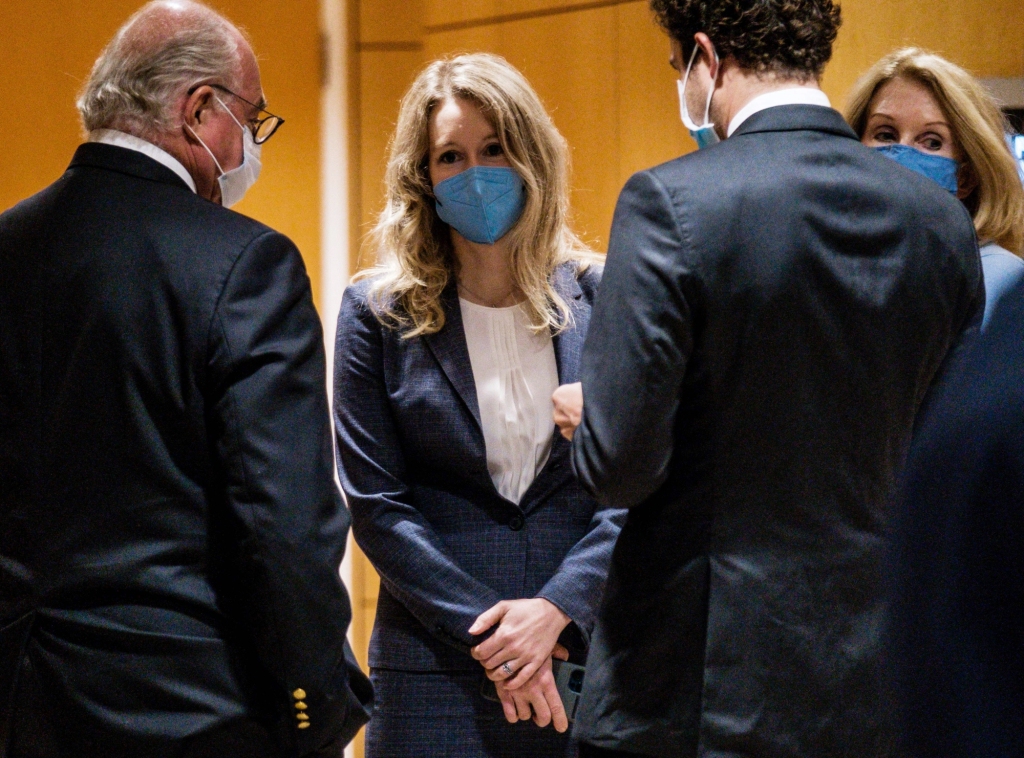The annual Black Friday shopping frenzy that for years filled Bay Area shops and malls may not be dead, but it appears to be struggling.
Already ailing from the rise of online shopping, and having suffered a body blow from the COVID pandemic, the in-person Black Friday quest for great holiday deals looked subdued this year, with nary a wait for a mall-lot parking spot Friday morning. The crowds of days gone teemed only in memory.
“There was literally no one in the stores when we got here at 7 a.m.,” said Kimberly Lozada, 53, a die-hard, decadeslong Black Friday shopper who had paused her traditional shopping spree in 2019 but hit Westfield Valley Fair mall in San Jose hard Friday after bolting from her Berkeley home at 5:30 a.m. “Before there used to be the lines out the door.”

Analysts studying the Black Friday picture across the U.S. said consumers were well positioned to rake in merchandise, with many people sitting on piles of pandemic-era savings, and softening consumer demand combining with an inventory glut to deliver bargains a-plenty.
But economic troubles, including persistent inflation and stock market declines, are weighing on Bay Area wallets. Steve Johnson, 70, went to Broadway Plaza in Walnut Creek on Friday morning, but only for a bite to eat, as the faltering stock market had halved his 401(k) retirement fund. “It sucks,” Johnson said.
Even folks determined to get out and loosen the purse strings in Black Friday’s shiny retail world kept a wary eye on the economy. Carlos Ortiz, 48, grabbed a seat outside Sephora inside Valley Fair while his daughter, Gabby, browsed the makeup store’s aisles. Ortiz, of Santa Clara, said his family wanted to shop in-person for the adrenaline of finding a good deal, but he was wary about what his daughter would ask to put on his charge card.
“I’m a little nervous about the bill, especially right now because everything’s a little more expensive,” Ortiz said. “We’ll shop a little today, and then little by little we’ll add to our lists so it’s not so heavy on the checkbook.”

Ortiz said it felt good to bring the family out for the occasion. “It’s hard to say ‘no’ to the kids,” he said. “We decided to spend here with the kids and have a little fun — as long as the bills are paid.”
This year’s economic conditions mean malls and shops hoping to entice shoppers have significant online competition. With a “price-sensitive consumer” seeking “the absolute best discounts,” the online marketplace is responding with discounts of up to 32% on computers and electronics, apparel, and children’s toys, said Vivek Pandya, a lead analyst for Adobe Digital Insights, which analyzes e-commerce.
“These discounts are almost double the magnitude of last year,” Pandya said.
Local businesses are also counting on robust sales. “It’s about a third of our revenue for the year. If a retail store misses their holiday numbers, it’s very difficult to dig out of that hole,” said Nathan Walden, who owns, Nathan & Co., two boutique gift shops in Oakland. His stores are filled with scarfs, winter candles, and colorful kitchen items. “We wrap over 10,000 gifts between Friday and Christmas eve,” Walden said. “It’s a lot of planning.”
Jyoti Shima and Tania Sehgal, best friends who live in Santa Clara, got together at Valley Fair, but did not plan to cross off long shopping lists in these inflationary times “Especially this year, everything is much higher,” said Shima, who had only purchased a North Face jacket that she found for an extra 25% off in-store. “I really didn’t expect things to be that much.”

One thing was lower than they expected, however: the crowds of people they would have to weave through inside the mall. “Last year, it was like you needed to follow people in a row it was so crazy,” Shima said. “I think weekends are more crowded than today.”
More than 166.3 million Americans are planning to spend their hard-earned money this Thanksgiving weekend through Monday and total sales in November and December could reach a staggering $960.4 billion, according to a survey from the National Retail Foundation. Demand remains strong for new laptops, televisions – and that fancy coffee maker you’ve been eyeing – even as inflation forces us to dig deeper for everything from gas to grocery trips.
Christopher Thornberg an expert in economic forecasting at UC Riverside said consumers are “alive and well” this shopping season. He pointed to the massive iceberg of savings many people built over the pandemic that is still providing a bulwark of cash to spend. According to the Federal Reserve, Americans have squirreled away $4.7 trillion into savings accounts and other financial instruments – up from about $1 trillion in 2019. “There’s $4.7 trillion burning a hole in our collective pockets and it doesn’t care about rising interest rates.”
But 70% of shoppers in one survey said they were changing their financial habits and reducing their spending compared to last year.
There are also recession clouds growing over the economy. A report by Wells Fargo dubbed this holiday shopping season as the “last hurrah” before an economic downturn.
“Households are spending, but they’re not really doing it from a sustainable source,” said Shannon Seery, an economist at Wells Fargo. Savings accounts might be strong now, but they’re not being replenished as inflation eats into income, said Seery, who is forecasting a recession starting in mid-2023. One of the more ominous data points for Seery is the rising rate of credit card debt, which rose by 15% this year, the largest increase in over two decades, according to the Federal Reserve Bank of New York.
“What happens in the new year right as the credit cards come due?” Seery said. “You don’t have as much excess savings to rely on, maybe you maxed out the credit card, and I think you do start to see consumers tighten their belts a bit.”
So why are people continuing to spend even as red lights flash on the economy? Deep discounts and financial health are important. But there are also cultural factors at play, experts say.
“The mandate to give gifts is pretty strong,” Pandya said. “It’s remarkable to see (online) spending levels.”
Seery of Wells Fargo said the lack of concern over COVID-19 might also be playing some role. “It’s the first holiday season where you might not have your guests take a COVID test,” said Seer. “Households are going to try and take advantage of that.”











